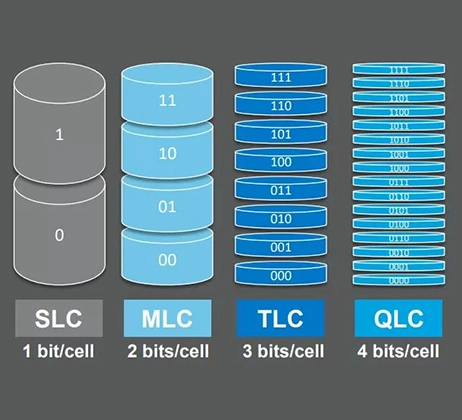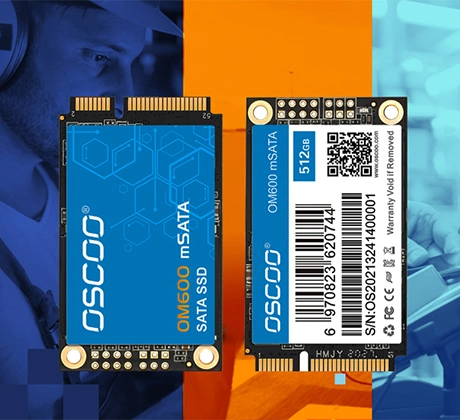Over the past few years, the transition from DDR4 to DDR5 has often been considered a “slow burn.” Although DDR5 offers technological advantages, its adoption was held back by cost, compatibility, and ecosystem constraints. However, by the latter half of 2025, many market and technical signals are beginning to point to a new reality: the transition is entering a critical phase. In other words, DDR5 is stepping out of its pilot stage, and DDR4 is gradually being squeezed out.
Market Supply and Demand, and Price Trends
One of the clearest signs is the counterintuitive pricing trend lately—older-generation DDR4 is, in some cases, more expensive than DDR5.
According to TrendForce, DDR4 contract prices in October 2025 are projected to rise by more than 10%, while spot prices may go up by 15% or more. Meanwhile, DDR5 contract and spot prices may also increase, on the order of 10–25%. At the same time, supply for DDR4 and LPDDR4 is expected to tighten further in the second half of 2025, pushing prices upward.
Already in early 2025, DDR4 spot prices began to surge. Some reports indicate that from May 2025 onwards, DDR4 prices jumped rapidly—modules like 8 GB saw increases of around 50%. In June, some 16 Gb DDR4 chips were quoted at prices as high as $12.50 per chip (or even more), while DDR5 chips of comparable capacity and speed held relatively steady or rose more slowly. This phenomenon—older standard becoming more expensive than the newer—reflects the strain in supply of DDR4 under the overlapping pressures of migration.
Why is this happening? At root, major manufacturers are gradually scaling back DDR4 process and capacity, reallocating resources toward DDR5, HBM, and other advanced memory solutions. TrendForce notes that the exit of DDR4 capacity and adjustments in the supply structure are key causes of this pricing distortion. Because demand from AI, cloud, and high-end applications is pushing manufacturers to favor higher value products, DDR4 becomes more of a marginal or balancing act.
On the DDR5 side, price increases remain more moderate. TrendForce forecasts that DDR5 might rise 3–8% in Q3 2025, while LPDDR5X could see increases of 5–10%. Because the overall DRAM market is still tight, manufacturers are focusing attention on DDR5, HBM, and other premium segments, which could keep upward pressure on DDR5 pricing.
In sum, supply and price trends are signaling that DDR4 is being marginalized, while DDR5’s market window is opening.
Technical Evolution and Process Progress
A successful migration can’t rely on hype alone—solid technical groundwork is essential. DDR5 is not simply a faster DDR4; it introduces architectural, control, power, and reliability changes.
From an architectural perspective, DDR5 introduces two 32-bit subchannels within a single DIMM, improving how the memory handles concurrent access. It also incorporates an on-module voltage regulator, shifting some power management responsibilities from the motherboard to the module itself. This helps simplify motherboard design and improve signal integrity.
In terms of performance, DDR5 can scale to higher frequencies and bandwidths. Early DDR5 modules often start at 4800 MT/s as a baseline, but the DDR5 specification allows for expansions into 6400, 7200 MT/s, and beyond. JEDEC’s evolving DDR5 standards also include onboard ECC (error correction), multi-level refresh mechanisms, and improved equalization and signal techniques to boost stability. Some academic proposals (e.g. for mitigating row-hammer) are even exploring fine-grained protections within DDR5 to reduce the performance overhead of stability measures.
However, these improvements come with costs: DDR5’s higher complexity demands better yields and tighter tolerances, making it initially more expensive per unit than DDR4. Consequently, manufacturers promoting DDR5 early must absorb higher R&D and yield risks.
On the process side, major DRAM vendors (Samsung, SK Hynix, Micron, etc.) are driving DDR5 toward more advanced process nodes. They are working with 1γ / 1δ nodes and beyond to increase density and decrease power usage. As process yield improves, DDR5’s cost-per-bit will decline, enabling it to compete more directly with DDR4 in price.
It is also important to note that DDR5 is not the only future direction. High Bandwidth Memory (HBM), 3D-stacked memory, CXL-extended memory, and other architectures are developing in parallel. In some high-demand or specialized use cases, DDR5 might coexist with or yield to these technologies. In the broader memory ecosystem, DDR5 is likely to play the role of “general-purpose main memory + mid-to-high throughput” rather than the ultimate extreme solution.
Industry Strategies and Supply Chain Dynamics
In the migration path, different players play different roles: there are early adopters, cautious followers, and those forced to transform.
At the DRAM chip level (Samsung, SK Hynix, Micron, etc.), the trend is to shift resources toward DDR5 and HBM while phasing out DDR4. Recognizing that DDR4 is approaching the end of its lifecycle, these companies must manage the retirement of old processes while investing heavily in new ones.
That said, some smaller or more DDR4-focused vendors (e.g. Nanya) may benefit in the short term from DDR4’s supply tightness and price surge. Some reports suggest that Nanya has been active in recent DDR4 orders, adjusting capacity to respond to demand. This approach can yield short-term gains, but it lacks long-term sustainability.
Module makers, memory brands, and ODMs face the challenge of restructuring product lines. Brands originally focused on DDR4 need to develop DDR5 offerings. In the transition period, mixed DDR4 + DDR5 lineups, differential pricing, performance differentiation, thermal solutions, stability guarantees, and overclocking features become competitive levers.
Motherboard, CPU, and platform manufacturers have a critical role in DDR5 adoption. Many new-generation processors and platforms now assume DDR5 support, effectively sidelining DDR4. These platform makers also must invest in BIOS, memory controllers, compatibility tuning, timing optimization, signal integrity, and stability assurance. At the same time, to assist existing customers, some may provide backward-compatible or migration-friendly solutions.
Downstream system integrators, OEMs, and end customers are also key stakeholders. In this critical phase, they must make procurement, inventory, and product positioning decisions: should they adopt DDR5 now, or hold off with DDR4 to save cost? Hybrid configurations, flexible switching strategies, and compatibility designs become essential tactics.
Risks and Challenges
Even if the trend of migration is clear, the path is far from risk-free.
First, cost and pricing risk remain prominent. DDR5 is still in a relatively high-cost phase; if its price is too steep, mass-market acceptance may stall. Even if costs fall, whether market prices will follow in lockstep remains uncertain.
Second, compatibility and stability concerns are real. Throughout the transition, motherboards, memory controllers, BIOS, drivers, timing tuning, and signal integrity are all potential failure points. Early DDR5 modules may suffer unexpected stability or compatibility issues; poor early experience could dampen user confidence and slow adoption.
Third, supply and yield bottlenecks can stall progress. If DDR5 process ramp-up is slower than expected, or key materials and equipment run into constraints, the transition will lag. Moreover, maintaining legacy processes for DDR4 while supporting DDR5 introduces resource competition and strategic tension.
Fourth, market acceptance and competition from alternative technologies pose a threat. Some low-cost devices, embedded systems, or industrial applications may continue relying on DDR4 or lower-tier memory. Until DDR5’s cost and power profiles fully normalize, these applications may resist migration. Additionally, technologies like CXL-extended memory, heterogeneous memory architectures, and compute-in-memory or memory + processing integrations might challenge standard DRAM’s dominance.
Lastly, macro-economic cycles, inventory adjustments, and supply chain or policy disruptions are wildcards. Memory industry cycles are volatile; demand swings, inventory gluts, trade policies, and supply chain risks can derail migration momentum.
When Does the “New Normal” Begin?
In this disruptive phase, the crucial question is: how do we know when the transition “inflection point” has truly arrived? We can track several indicators:
- The speed of decline in DDR4’s capacity share and shipment volume. If we enter a rapid downward stage, it means DDR4 is entering accelerated phase-out.
- DDR5’s penetration rate and shipments hitting a turning point, especially when it dominates key markets (PC, servers, cloud).
- The narrowing or elimination of price gaps between DDR4 and DDR5—or the disappearance of any inverted pricing—signals a matured market.
- Public announcements from manufacturers, capital movements, changes in capacity planning, and shifts in product portfolio are also strong clues.
- One must also watch segmented markets: adoption rhythms differ across consumer PCs, servers/data centers, embedded/industrial systems.
Based on current public data and industry projections, this critical period is likely to emerge in late 2025 through early 2026. That means from the second half of 2025, DDR5’s penetration in certain segments may accelerate, and DDR4’s exit will become more visible. By mid-2026, DDR5 may well become the mainstream standard, while DDR4 retreats to fringe or niche roles.
Conclusion and Outlook
The transition from DDR4 to DDR5 is far more than “just a faster memory.” It involves technical complexity, resource reallocation, market restructuring, and downstream ecosystem coordination. We are now at a structural tipping point: DDR5 is gaining the technical and market conditions to scale, and DDR4’s survival space is shrinking.
Over the next 3 to 5 years, DDR5’s penetration will move from high-end platforms to mainstream segments, costs will decline, and ecosystem support will strengthen. Meanwhile, high-bandwidth or ultra-high-density applications may gradually migrate toward HBM, heterogeneous memory architectures, or memory + compute integrations. DDR5, in other words, is not the final frontier, but one of the foundational pillars of the future memory ecosystem.





